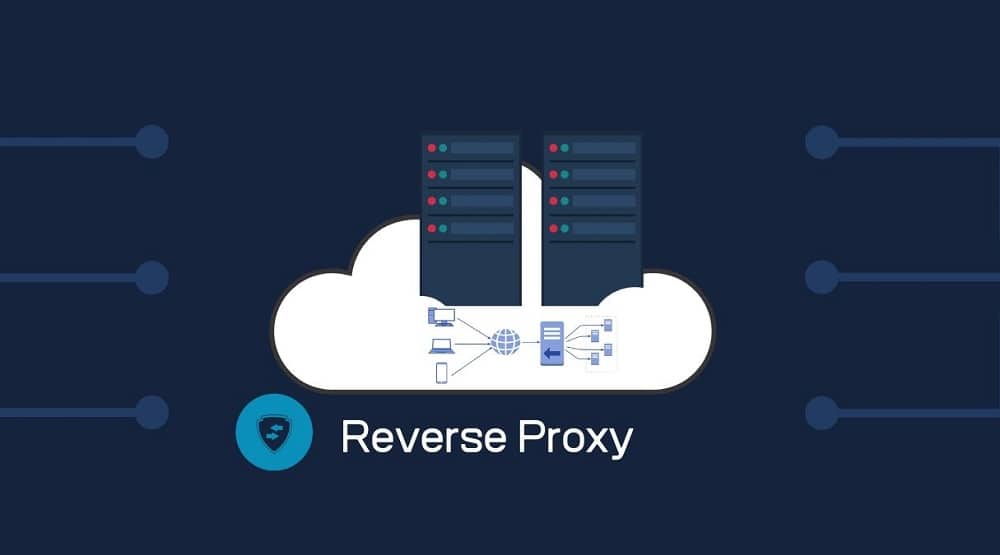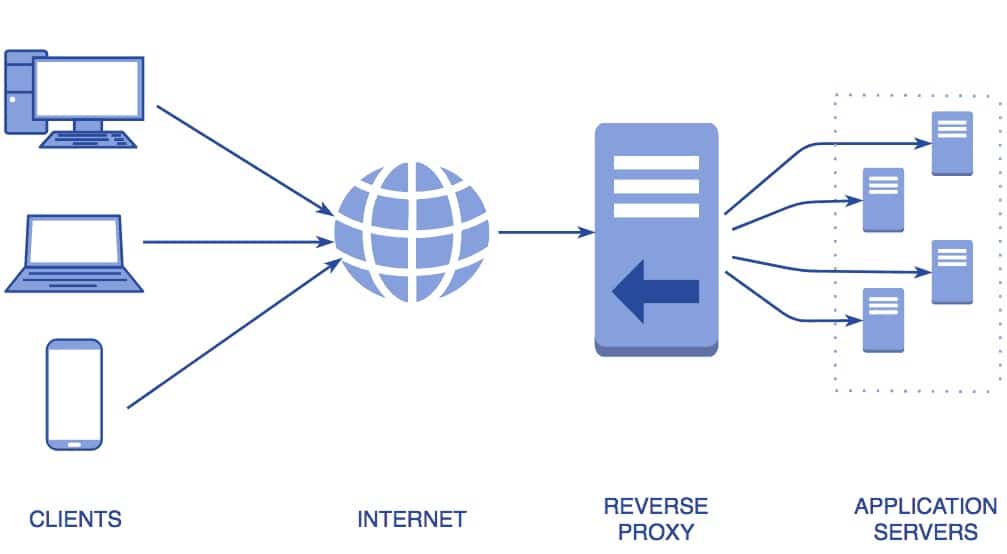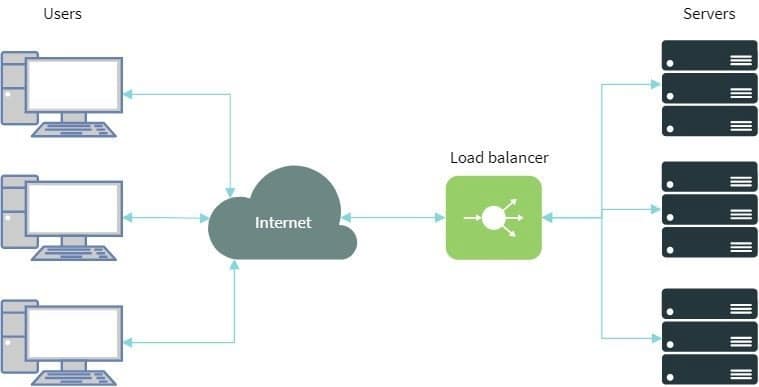If you want to know more about Reverse Proxy, click through now. This article is an ultimate guide to Reverse Proxies and contain all you need to know about Reverse Proxies as a beginner.

Many Internet users know of Forward Proxy and what they used for, but for Reverse Proxy, the same can’t be said. This is because not many people have server-side knowledge; they are only knowledgeable of the client-side.
Just as you have proxies to provide you privacy, servers to require them for their own privacy – and Reverse Proxy is the proxy for servers. It is because of this that this article was written – to provide you an introduction into the world of Reverse Proxy. you will be learning about what they are, how they work, and their uses.
What is a Reverse Proxy?

A Reverse Proxy is a proxy server that acts as a gateway to a web server. When you send requests to a web server that makes use of a Reverse Proxy, your requests do not go to the web server; they will go to the Reverse Proxy which will then determine if it should route it to the web server or block it.
This means that with a Reverse Proxy in place, you never get to have direct communication with the web server using it. In fact, you wouldn’t even though that it is there as it will appear to you like the actual server. See them as some kind of a wrapper around a web server or a cluster of servers. They can protect it against attacks and provide better web performance by way of load balancing and caching.

How a reverse proxy works
Reverse Proxies are solely the work of server-side engineers. You, as a site visitor, do not have anything to do with it. If there’s one in place, you do not have a choice than to make use of it. This is because according to its structural position, it serves as a gateway to the servers and no request gets to the servers using them except through them.
Just like you require privacy, servers do too. However, aside from protection from attacks, some make use of Reverse Proxies to increase their web performance through load balancing and caching.

For a server or group of servers making use of this type of proxies, you would not know anything about the actual servers. The IP Address of the Reverse Proxies will be what will be known to you. When you send a request to a web server using it, your request goes straight to this reverse proxy server.
The proxy then decides on what to do with the request, whether to relay it to the appropriate server or send you back a forbidden error response. If it authorizes your request, then it will save a copy of your request including IP Address, and relay your request to the appropriate server.
When a response is sent back, it is sent to the Reverse Proxy, which will then forward it to you. All these happen in a short period of time that you wouldn’t even notice. Some Reverse Proxies can actually cache resources, which means that if the information you are looking for is already in the cache, it does not necessarily have to waste resources, trying to fetch it again – it will simply send it to you without bothering the server.
Reverse Proxy server-side technologies
The Reverse Proxy server offers useful technologies for your companies and websites to protect themselves from various types of connections, or to use as filters, firewalls, or additional security, Here let me explain 3 necessary applications for Reverse Proxy.
-
Load Balancing

If you have been trying to research about Reverse Proxies online, chances are there that you must have come across load balancing. Some even take them to be the same thing, while others think the only work Reverse Proxies do isact as load balancers. While all these thoughts cannot be said to be entirely true, it confirms the fact that the most important reasons why people use Reverse Proxies are for load balancing.

High traffic websites usually have the problem of dealing with a huge number of requests per minute, and this could slow down their system performance and ruin response time. To ensure better user experience and faster response, such high traffic websites make use of Reverse Proxies.
With Reverse Proxies, they will have a cluster of servers all carrying out the same function. Instead of getting one server to respond to all requests, it distributes the requests among the servers thereby improving response time and not overworking any of the servers.
-
Caching

Some Reverse Proxies can act as a caching machine. Usually, if you send a thousand requests in a minute requesting the same resources, the requests will get to the server requesting the same resources over and over against, thereby wasting resources and valuable time. This is an inefficient way of doing things. However, with the help of Reverse Proxies, when a resource is requested for the first time, it caches (save) it.
The subsequent request will not be relayed to the server – the proxy will just pull out the required resources from its cache. They are perfect for saving copies of static files since they are no dynamic.
-
Security

As I stated earlier, requests do not get to the web servers directly if they make use of a Reverse Proxy. They help protect web servers from known vulnerabilities. If a request comes with malicious intends, the proxy intercepts it and blocks it.
Also, very important is the fact that it becomes more difficult trying to attack the web server directly. This is because you do not get to know about the servers. In a bid to attack the servers, you might end up attacking the proxy, which is far better. However, this is not a foolproof situation as attacks can still get to the servers.
Uses of Reverse Proxies
Are you still looking out for what Reverse Proxies are used for? If you are a website owner, there comes a time when you’ll have no option but to make use of it because of the enormous benefits they provide. Below are the important uses of this type of proxies. There are a lot of different reasons why a company might use a reverse proxy system.
- The company can hide details of their actual internal server structure, making it harder to access or compromise those servers. Hacking protection, essentially.
- The reverse proxy can use firewall settings to help protect against DDoS attacks. That proxy can soak up the stress of a DDoS and pass through legitimate traffic without hurting the performance of the real web servers. Of course, as with a door with a crowd trying to pass through, it can still be a bottleneck, but it’s not the kind of bottleneck that compromises user data when it fails.
- The reverse proxy might be equipped with hardware that speeds up the verification of SSL certificates, which makes SSL connections faster and less prone to being exploited.
- If there are several internal web servers that have redundant data on them, a reverse proxy can act as a load balancer, making sure each of the internal servers is low-stress. This is particularly useful when each individual server is of minimal power but together they form a potent source of resources.
- Reverse proxies can be used as caches for dynamic content, by providing dynamic data to multiple clients at once when the request is the same. This process is called web acceleration.
- Reverse proxies can handle data compression for the web servers, to provide faster connections and lower stress primary web servers.
- Reverse proxies serve to unify web addresses when the access address has to remain the same. If you have five web servers, normally they would each have their own IP address. This would make it difficult for a static script to access, because it would be forced to access the IP specified, and that server might be busy. There are many ways around this, of course, but a reverse proxy that uses its own IP address and delivers requests to whichever server is open is a great one.
- Reverse proxies can be used for split testing purposes by routing traffic in equal measures to content served on two different web servers, rather than requiring that the tester use links or script-based tagging to divide traffic between options.
Again, all of this is only for the benefit of the company and website operating the system. A client sending traffic to the site gets no anonymity benefits or any of the other perks of a proxy. They can, however, use a proxy without disrupting a reverse proxy, and vice versa. They are perfectly compatible because they fill different roles.
Conclusion
Reverse Proxies have their usefulness in the request and response cycle. While they can be used for security, they also can give end-users more responsive responses in the case of high traffic websites. They are usually transparent and you wouldn’t even know they are there since some hide the footprint you can use to know of their presence.
Related,






